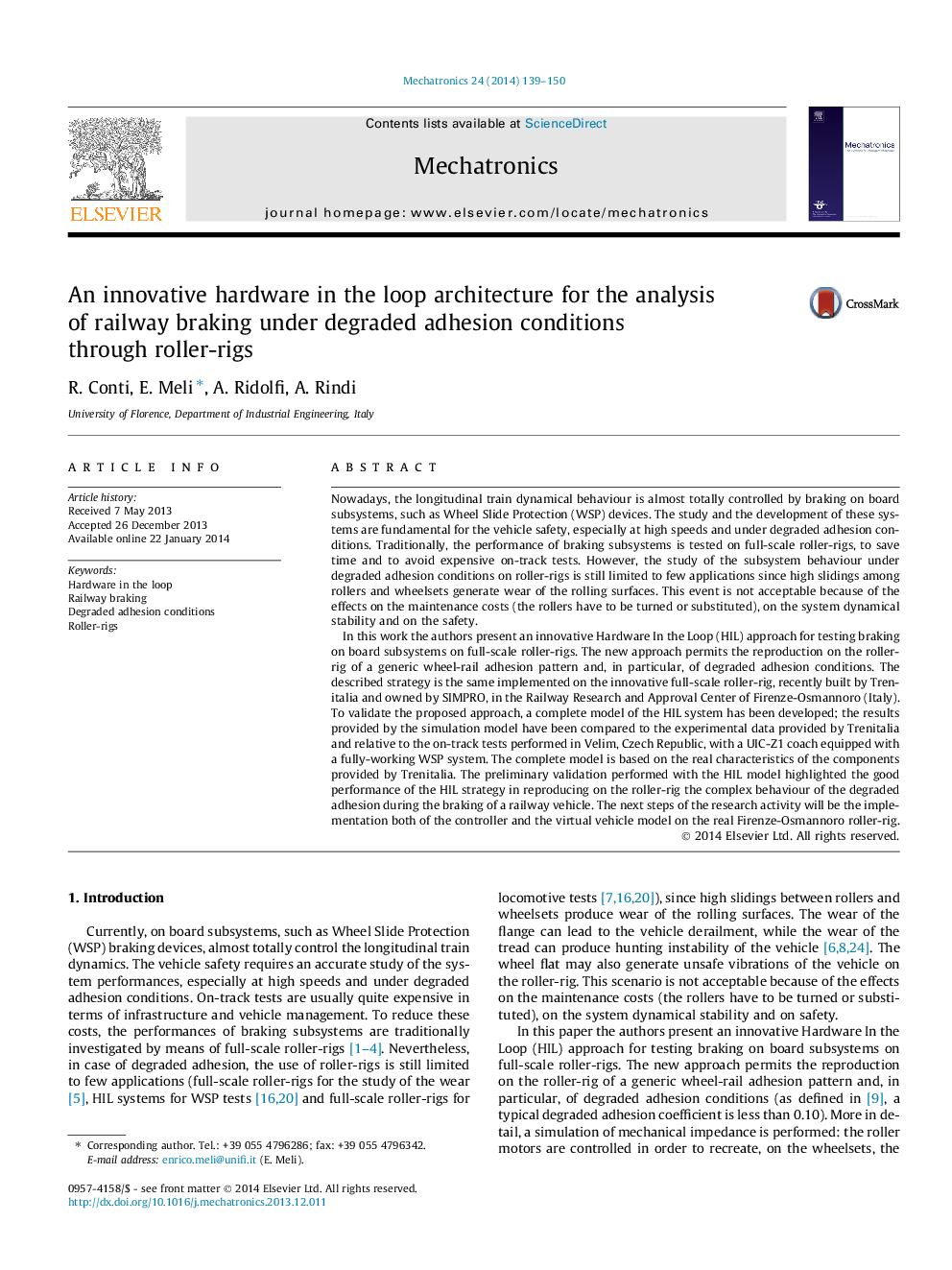| کد مقاله | کد نشریه | سال انتشار | مقاله انگلیسی | نسخه تمام متن |
|---|---|---|---|---|
| 732534 | 893250 | 2014 | 12 صفحه PDF | دانلود رایگان |
Nowadays, the longitudinal train dynamical behaviour is almost totally controlled by braking on board subsystems, such as Wheel Slide Protection (WSP) devices. The study and the development of these systems are fundamental for the vehicle safety, especially at high speeds and under degraded adhesion conditions. Traditionally, the performance of braking subsystems is tested on full-scale roller-rigs, to save time and to avoid expensive on-track tests. However, the study of the subsystem behaviour under degraded adhesion conditions on roller-rigs is still limited to few applications since high slidings among rollers and wheelsets generate wear of the rolling surfaces. This event is not acceptable because of the effects on the maintenance costs (the rollers have to be turned or substituted), on the system dynamical stability and on the safety.In this work the authors present an innovative Hardware In the Loop (HIL) approach for testing braking on board subsystems on full-scale roller-rigs. The new approach permits the reproduction on the roller-rig of a generic wheel-rail adhesion pattern and, in particular, of degraded adhesion conditions. The described strategy is the same implemented on the innovative full-scale roller-rig, recently built by Trenitalia and owned by SIMPRO, in the Railway Research and Approval Center of Firenze-Osmannoro (Italy). To validate the proposed approach, a complete model of the HIL system has been developed; the results provided by the simulation model have been compared to the experimental data provided by Trenitalia and relative to the on-track tests performed in Velim, Czech Republic, with a UIC-Z1 coach equipped with a fully-working WSP system. The complete model is based on the real characteristics of the components provided by Trenitalia. The preliminary validation performed with the HIL model highlighted the good performance of the HIL strategy in reproducing on the roller-rig the complex behaviour of the degraded adhesion during the braking of a railway vehicle. The next steps of the research activity will be the implementation both of the controller and the virtual vehicle model on the real Firenze-Osmannoro roller-rig.
Journal: Mechatronics - Volume 24, Issue 2, March 2014, Pages 139–150
